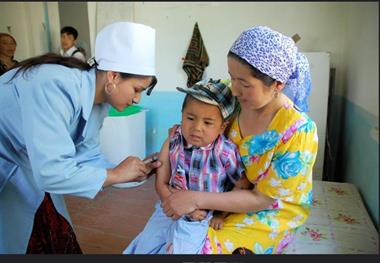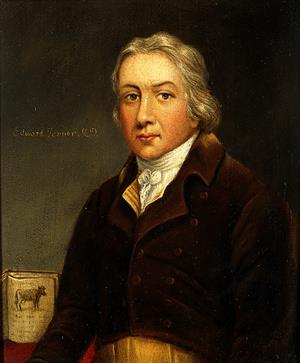
PUMPA - SMART LEARNING
எங்கள் ஆசிரியர்களுடன் 1-ஆன்-1 ஆலோசனை நேரத்தைப் பெறுங்கள். டாப்பர் ஆவதற்கு நாங்கள் பயிற்சி அளிப்போம்
Book Free DemoWhy do we need immunization?
Our immune system will respond to any foreign pathogens invasion on our body. But in the case of some germs or pathogens, our immune system isn't quick or strong enough to prevent it from causing infection. So humans need immunizations to protect the body from harmful infectious agents causing diseases.

Vaccinating a child
Immunization is a process by which an antigens or antibodies are administered to develop resistance from specific infectious agents.
Vaccines are inoculated into the body to prevent diseases caused by infectious agents. This process of inoculation of vaccines into our bodies is called vaccination.
One efficient way of controlling the spread of these infections is to strengthen the host defences. This strengthening of defences can be accomplished by immunization. Immunization is one of the cost-effective weapons of modern medicine when a large proportion of a community is immunized against a disease. The rest of the community benefits because it does not spread.
Before learning about vaccines, we must first understand words like antigen and antibody.
Important!
When a disease-causing microorganism enters the body, it produces substances that aid our bodies in recognising the microbe as a foreign agent. This substance is called antigens.
When an antigen reaches the body, it stimulates the production of substances that aid in the fight against microbes. These substances are called antibodies.
A video explains what are antibodies?
Vaccines:
Do you know the name of the world's first artificially produced vaccine?
A thousand years ago, healthy people would inhale a powder made from smallpox scabs crusts to protect themselves from smallpox disease. This method is the first known vaccination technique used by humankind.
In modern medicine, Edward Jenner introduced the process of vaccination. According to the World Health Organisation (\(WHO\)), the Jennerian vaccination has eliminated smallpox totally from the human population.

Edward Jenner
Vaccines are preparation of living or killed microorganisms or their products used to prevent or treat diseases.
Vaccines are of two types:Live vaccines and Killed vaccines
Live vaccines:
They are prepared from living organisms. The pathogen is weakened and administered.
Example:
BCG vaccine, oral polio vaccine
Killed vaccines:
Microorganisms (bacteria or virus) killed by heat or chemicals are called killed or inactivated vaccines. They require a primary dose followed by a subsequent booster dose.
Example:
Typhoid vaccine, cholera vaccine, pertussis vaccine
A video explains how vaccines work?
Vaccine and Disease:
Types of vaccine | Name of the vaccine | Disease |
| Live attenuated | MMR | Measles, Mumps, Rubella |
| Inactivated (Killed antigen) | BCG (Bacillus Calmette Guerin) | Tuberculosis |
| Inactivated (Killed antigen) | Inactivated polio virus (IPV) | Polio |
| Subunit vaccines (purified antigens) | Hepatitis B vaccine | Hepatitis B |
| Toxoid (Inactivated antigen) | Tetanus toxoid (TT) | Tetanus |
| Toxoid (Inactivated antigen) | Diphtheria toxoid | Diphtheria |
Reference:
https://upload.wikimedia.org/wikipedia/commons/0/0c/Edward_Jenner._Oil_painting._Wellcome_V0023503.jpg
https://www.freepik.com/free-photo/packings-pills-capsules-medicines_1178867.htm#page=1&query=Colorful%20pills&position=0